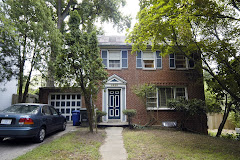Dr. Franklin E. Kameny laid the philosophical foundation for a new militant self-affirming homosexual civil rights movement with the submission of his petition for a writ of certiorari on January 27, 1961.
With occasional outbursts of anger, Kameny sets out in seventy plus pages a new radical assertion of the normalcy of homosexuality. Kameny asserts the innate right of all homosexuals to ALL civil liberties granted by the constitution of the United States Constitution.
In sentences ringing with indignation, Kameny wrote of homosexuals in 1961
"This is a group comparable in size to the Negro minority, and roughly the same order of magnitude as the Catholic minority, a group some 2 1/2 times the size of the country's Jewish minority and equivalent to the world's Jewish population. It is a group that has borne and is bearing the brunt of a persecution and discrimination of a harshness and ferocity at least as severe as that directed against these other minorities, but which persecution instead of being mitigated and ameliorated by the government's attitudes and practices has instead been intensified by them ..."Kameny's anger at overreaching bureaucrats' imputations of immorality finds voice in the writ where Kameny declares
"Petition asserts, flatly, unequivocally, and absolutely uncompromisingly that homosexuality, whether by mere inclination or overt act, is not only not immoral but that, for those choosing voluntarily to engage in homosexual acts, such acts are moral in a real and positive sense, and are good, right, and desirable socially and personally."In less than two months, on March 17, 1961, the US Supreme Court unanimously declined to review Kameny's petition.
The decision stoked fires of political determination already lit in the 38 year old Kameny and 23 year old Jack Nichols, whom Kameny had met the previous autumn and who shared Kameny's views. Meeting over the summer of 1961, they organized a militant new civil rights organization to assert and defend the rights of homosexuals nationally and locally: the Mattachine Society of Washington.
Washington's Mattachine introduced itself to the world, and most particularly to the federal government, on November 15, 1961.



